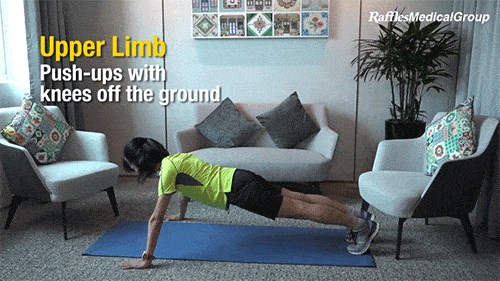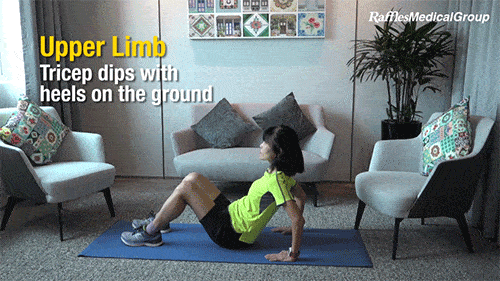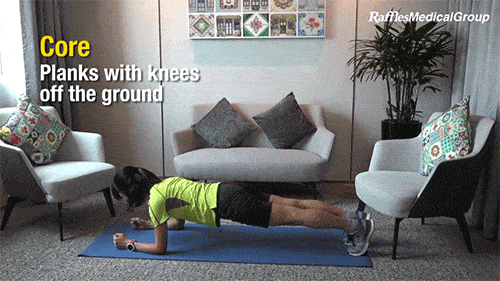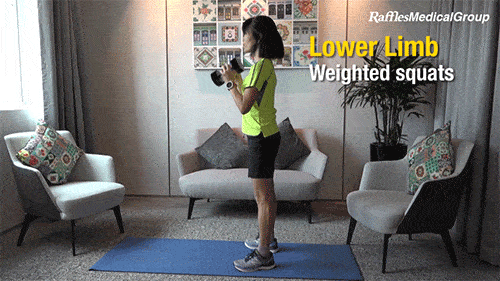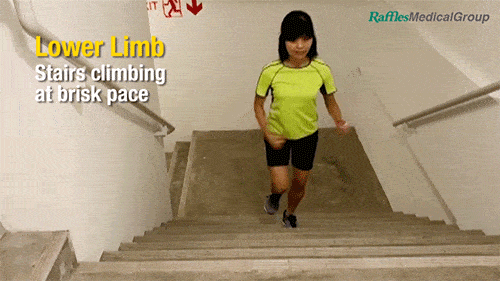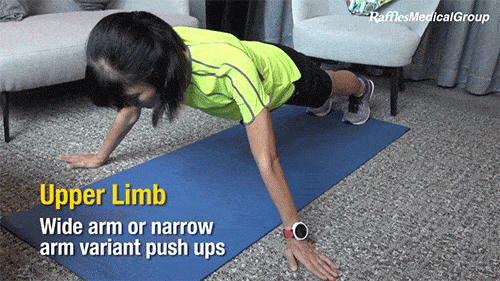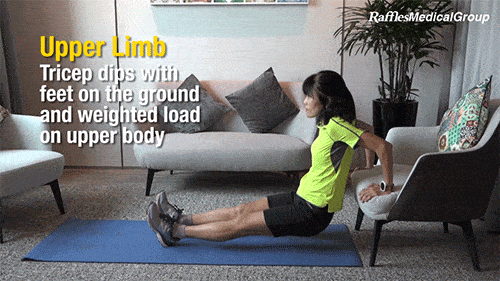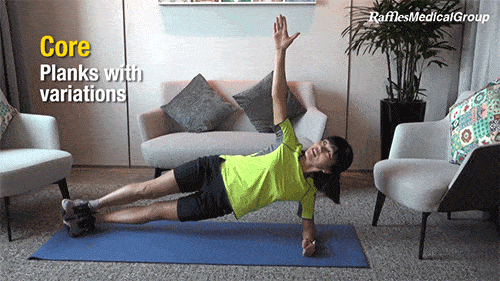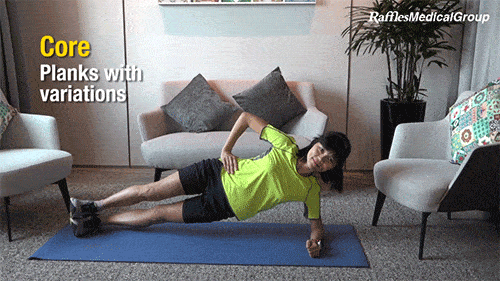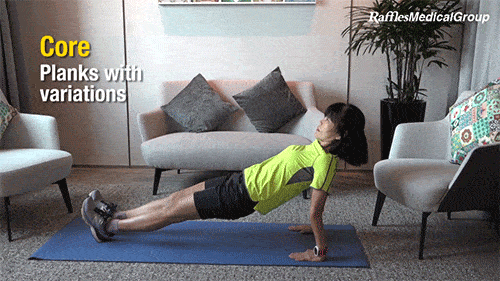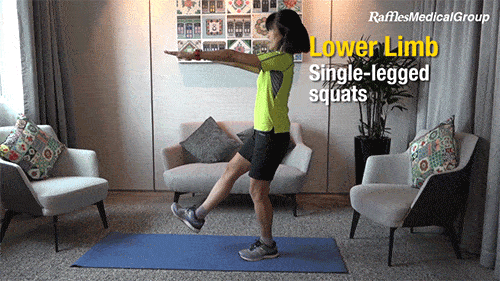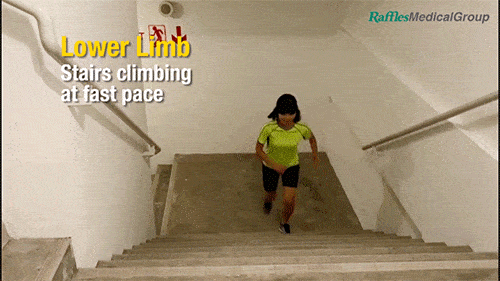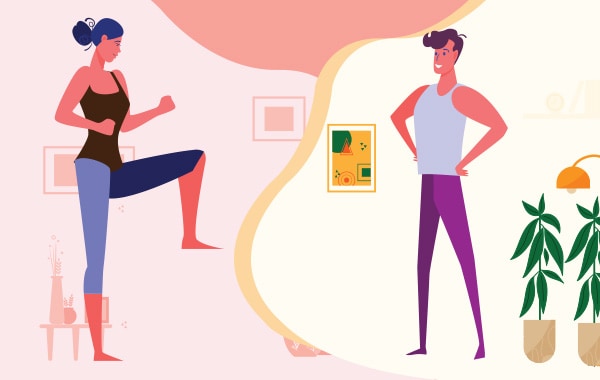
Keep Fit
Consistently
Staying in, but sweating it out
How to stay fit while working from home by Dr Derek Li, Senior Family Physician, Raffles Medical
Given the current heightened safe distancing measures in place, most of us may find ourselves working from home for a period of time. However, that does not mean we should ignore key aspects of staying healthy such as adopting regular physical activity and managing good mental health. Maintaining regular exercise habits is important during this period.
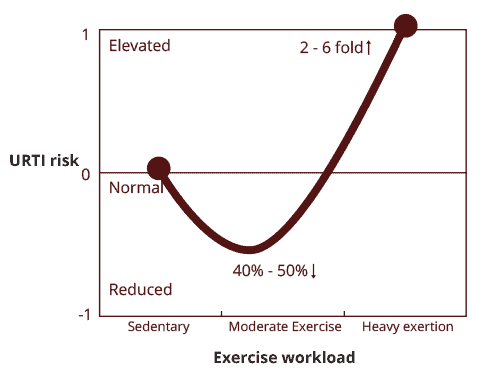
Exercising has been shown to boost our immune system. A moderate intensity exercisie of less than 60 minutes’ duration has been shown to increase the blood circulation of certain white blood cells. This improves our immune defences and reduces our body’s inflammation in the longer term. All these benefits translate to a delay in the ageing processes, and more importantly, reduced susceptibility to infections.
Exercising is also good for preventing cardiovascular disease. Habitual exercise prevents the build-up of atherosclerotic plaques in the blood vessels, and though the mechanisms are not fully understood, it is now believed to be mediated through an anti-inflammatory process.
Exercising also improves circulation in general. Firstly, exercising trains the body to pump blood quickly in a more efficient manner. Secondly, exercising can trigger the growth of new blood vessels to improve blood flow in areas which are lacking. This is a natural adaptive response similar to how muscles get stronger with more resistance exercises. All these are over and above the myriad benefits that physical exercise has for risk factors other than heart diseases and stroke, such as Diabetes, Hypertension (high blood pressure) and Hyperlipidaemia (high cholesterol).
Looking at Diabetes in particular, exercising is routinely prescribed as a key pillar of Diabetes management. In Diabetics, the body cannot regulate its sugar levels either because it has become resistant to the effects of Insulin (a hormone we naturally produce that reduces sugar levels), or there is a relative lack of Insulin production. In advanced Diabetes, it is often a combination of both.
Most benefits of physical activity on the management and prevention of Type 2 Diabetes are mediated by how our body responds to Insulin in effect from exercising. In the short term, exercising improves the body’s sensitivity to insulin, especially in the muscles, and reduces blood sugar levels. This is seen during a mild-moderate intensity exercise and for 2-72hrs afterwards.
In the longer term, regular exercise results in sustained improvements in Insulin action, blood sugar control, as well as fat metabolism in muscles. Improved Insulin regulation can be seen for up to 120 hrs post-exercise and hence, the benefit will remain and reinforce itself when you do exercises regularly.
How do we go about exercising? It is always best to incorporate a combination of aerobic and resistance exercises into any exercise programme. What kind of exercises you can do depends on your existing fitness level, and/ or if you have any existing medical conditions that may worsened with certain exercises.
For aerobic exercises, given that there are no restrictions on outdoor exercise and as long as safe distancing principles are observed, we should take the opportunity to go for brisk walks or jogs wherever possible.
Give It A Stretch
Before we start on any exercises, it is important to do warm-ups and stretching to reduce muscle tension, avoid muscle cramps and prevent any muscle injuries.
Here are 4 simple warm-ups you can do before getting into your work out.
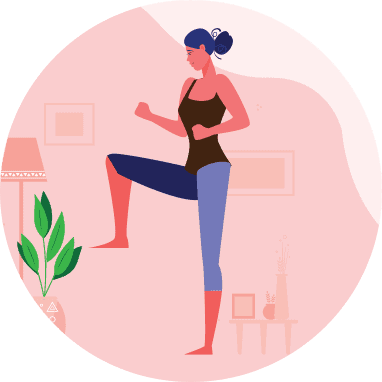
Stand up, march on the spot with knees raised to the level of your hip for 10 seconds.
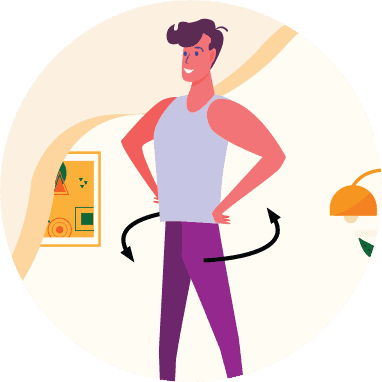
Do hip rotations in both directions for 10 seconds.
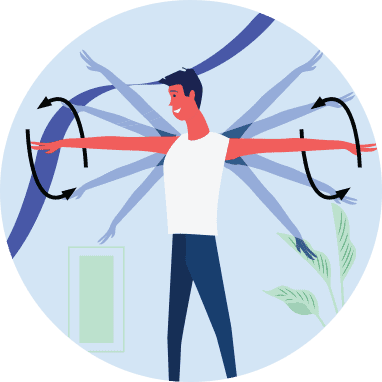
Raise both arms up at your sides with straight elbows, and do 5 forward and 5 backward circular movements with your arms.
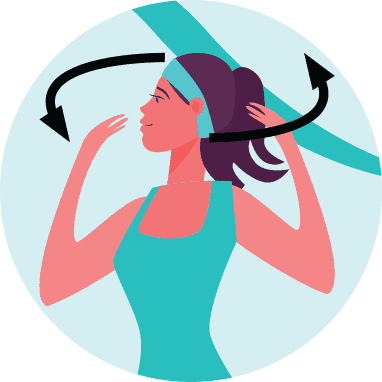
Do slow head rotational movements clockwise x 3 and anticlockwise x 3.
Beginner
(Little to no exercise history)Intermediate
(Exercise once every week)Advanced
(Periodic exercise enthusiast)Beginner
(Little to no exercise history)Upper Limb
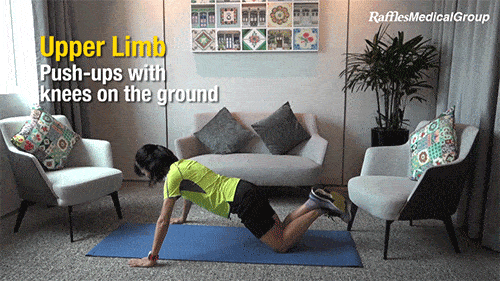
Push-ups
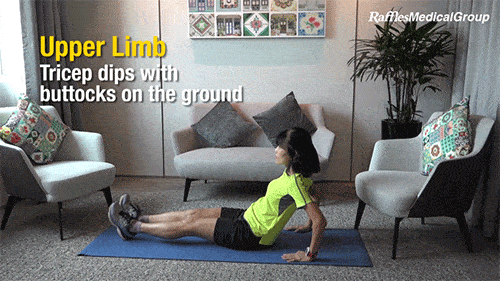
Tricep Dip
Core
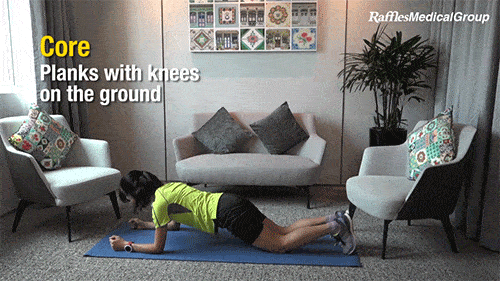
Planking
Lower Limb
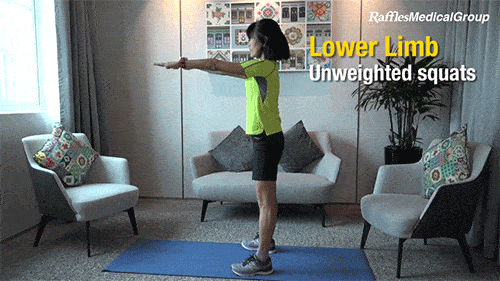
Squats
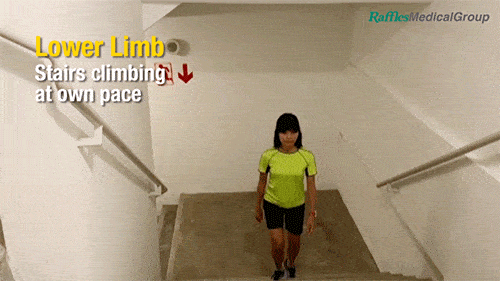
Stairs
Intermediate
(Exercise once every week)Advanced
(Periodic exercise enthusiast)Additional Workout Tips
Here are some pointers on how to prepare yourself before embarking on an exercise programme:
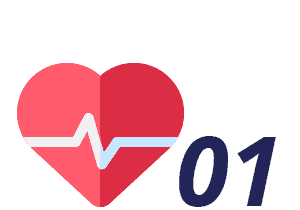
Check your health
There are 3 things you can do to review your body’s condition - check your temperature, time your breathing rate (over 60sec) and heart rate (over 60sec). If any of these are higher than normal, consider postponing your exercise. A normal resting breathing rate for adults is <20 breaths a minute.
A normal resting heart rate for adults is <90 beats per minute.
If you are experiencing any aches and pains in any joints, consider postponing your exercise.
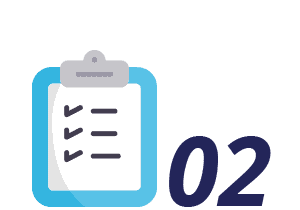
Create a plan
The principles are easy: start simple, start small, start slow.
You should not increase duration and intensity at the same time. Increase one or the other, and only at 5-10% increments at a time. After you make a plan, stick with it. Unless you have been exercising regularly, resist doing more than what you have planned after completing your scheduled activity, even if you are feeling good. This is so that you exercise safely and within your abilities.
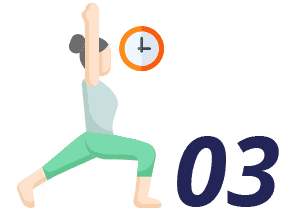
Make it a habit
You should start off with 1-2 sessions a week, then maintain it for at least 2-3 weeks before increasing the frequency. Once your body adapts to doing regular exercise, it will be easier to keep the momentum going.

Monitor your progress
This is where having access to user-friendly technology comes in handy. You don’t actually need to wear any special tracker as there are plenty of free activity tracking apps in the market now. Take advantage of such app as most of them allow logging of manual activities.
I personally use Garmin Connect, but there are many others out there like TrainingPeaks, MapMyFitness etc. Ultimately, these are platforms that allow you to record your activities, and then allow you to view and analyse them over time. The main benefit of these is to see your fitness improve over time, and help you judge if you are doing too much too soon.
If you feel discomfort anywhere at any point during your exercise, you should stop immediately. If you do not feel better within a few minutes or if you feel progressively worse, consider calling 995 as it could mean a medical emergency.
Do not resume your exercise even if you start feeling better. Consult a doctor at your soonest convenience to check for any undiagnosed medical condition.
While managing our physical and mental health is important, it is also paramount to practice caution and safety. Little steps are still better than nothing. Together, we can beat COVID by staying home, staying fit and staying safe.
Raffles Medical Group will continue to be with you no matter you are.
